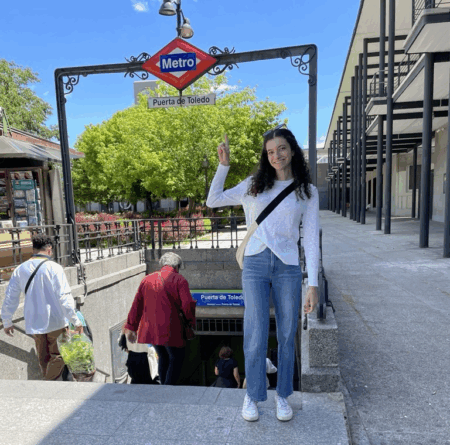
Back in May, I took a week-long trip to Spain with my family, the majority of which was spent in Madrid. In addition to the beautiful sights, delicious food, and friendly people, one of the things that stood out to me most was the city’s outstanding public transportation system! I was impressed with the abundant multimodal options, ranging from Metro, to buses, to bikeshare stations.
Trains Galore
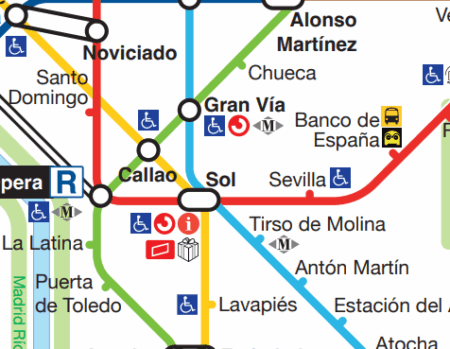
While our most frequent transportation mode throughout the trip was walking, we took the Metro almost every single day, too. We were lucky enough to stay within walking distance of the Sol Metro stop, which serves Lines 1 (light blue), 2 (red), and 3 (yellow). In terms of Washington, DC, I like to compare Sol to Metro Center—a transfer hub at the intersection of several busy lines.
Taking the Metro meant purchasing a Multicard, Madrid’s non-personal, contactless, rechargeable transit card. The Multicard costs €2.50 and can hold single, 10-trip, airport, or tourist (unlimited trips during a chosen timeframe) ticket purchases. Many Madrid residents buy a personal card instead, which features their name and photograph. Personal cards can hold single, 10-trip, airport supplements, 30-day, and annual passes, but they cannot store tourist tickets.
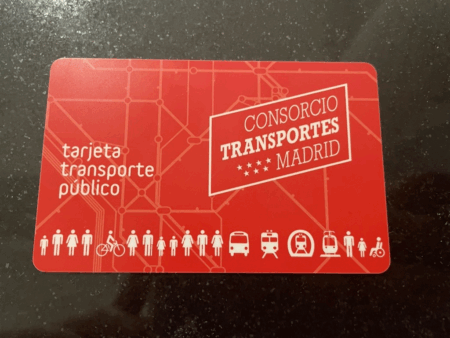
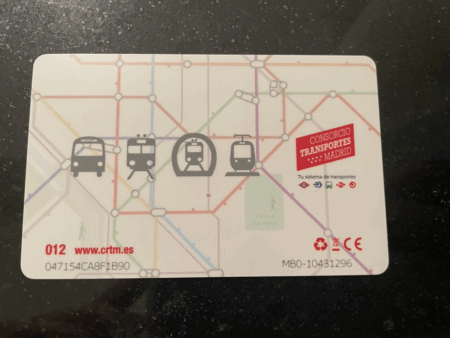
After purchasing our Metro cards (we opted to buy 10-trip passes and refill them as needed), we were ready to take the train all week long. I was stunned to see the magnitude of ridership on Madrid’s Metro; there were rarely any open seats on the trains. Throughout the entire trip, I only sat down on the Metro once! While crowded transit can sometimes be difficult to navigate, the packed trains added to the excitement of being in a city where public transit is a frequently used, viable option for residents.
By far the most exciting aspect of Madrid’s Metro was the frequency of service. Over the course of the week, we never waited more than five minutes for a train . There were several instances where we just missed our train, but we never had to worry about that derailing (no pun intended) our schedule. The next train was always there before we knew it.
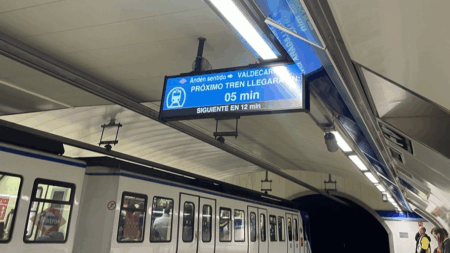
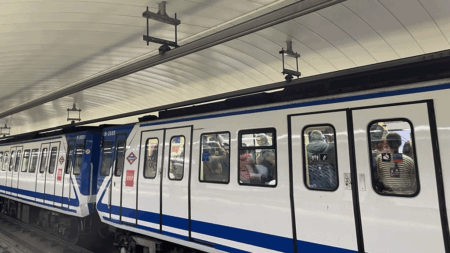
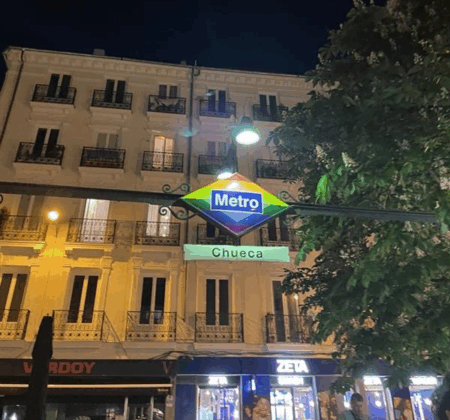
While every Metro station had its own unique charm, my favorite station to visit was Chueca on Line 5. Madrid’s Chueca neighborhood is a hub for the city’s LGBTQ+ community, and the station paid homage to this with pride-themed décor. The sign labeling the station from the outside was decked out in rainbow colors, as were many of the walls inside. It was wonderful to see that Metro chose to represent and uplift the community through small touches in its designs.
My train travel didn’t stop with Metro; one of the highlights of the trip was a day spent in Toledo, which was a short train ride away from Madrid. To visit Toledo, we took the Metro to Madrid’s Atocha station, conveniently located four stops away from where we stayed. Atocha serves commuter, regional, and intercity trains run by Renfe, Spain’s national rail company. To me, Renfe seemed like the Amtrak of Spain!
The ride from Madrid to Toledo took approximately 30 minutes, giving us plenty of time to explore Toledo throughout the day. Tickets cost $17 per person each way ($34 round trip). This seemed reasonable for the time saved over driving—the average drive from Madrid to Toledo takes about an hour, not to mention the cost of renting a car and the difficulties of driving in an unfamiliar place. I would recommend Renfe to anybody looking to visit multiple cities while in Spain. For those interested in travel between countries, Renfe even offers service between Madrid and Marseille, France!
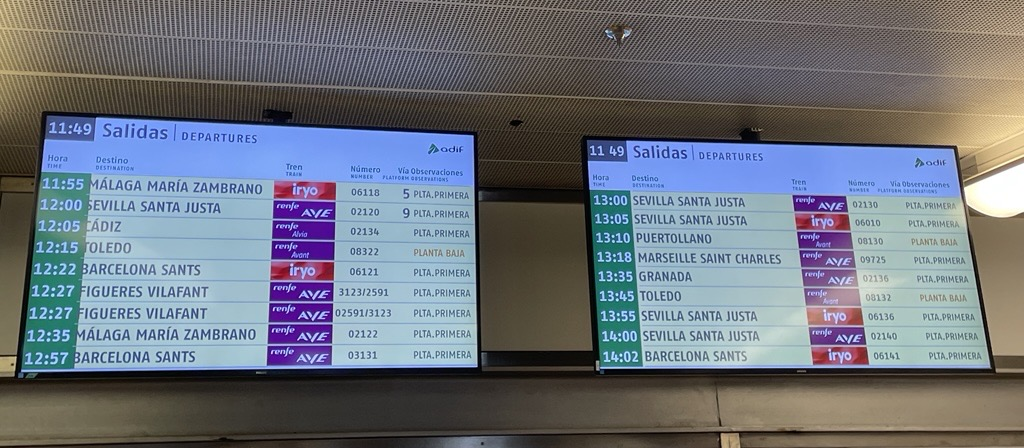
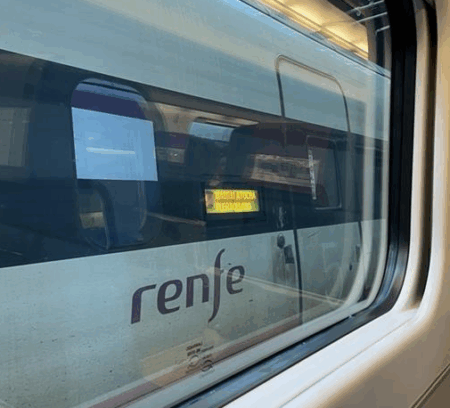
Beyond the Rail
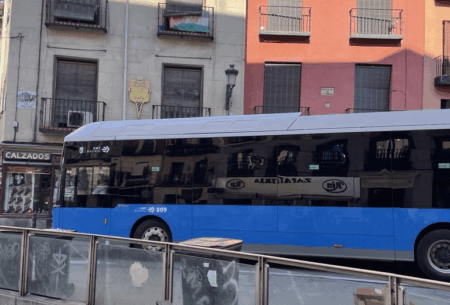
Madrid offers numerous transit options outside of their train systems, including buses run by Madrid’s Municipal Transport Corporation (EMT Madrid). This bus system has over 200 lines and more than 10,000 stops. Several of EMT Madrid’s bus routes operate 24/7, filling in transit gaps left by Metro’s 6:00 a.m. to 1:30 a.m. schedule.
Unfortunately, I did not get the chance to ride any EMT Madrid buses; Metro’s robust infrastructure covered all the travel areas on our itinerary for the week. However, I saw the blue buses on the road many times throughout the trip, which made me feel confident that they run on a frequent basis and serve numerous commuters daily.
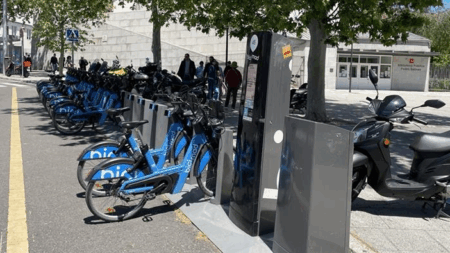
Another transportation option I was excited to see, but did not get the chance to try, was BiciMAD, Madrid’s bikeshare system. Like Capital Bikeshare in the District, BiciMAD has numerous docking stations across the city (630, to be exact). Riders can unlock a bike at a docking station and return it to any dock in the city upon completing their ride. Unlike Capital Bikeshare, BiciMAD does not offer classic, non-electric bicycles. All 7,735 bikes in the fleet are e-bikes made of recycled aluminum. Harnessing powerful technology for a smooth user experience, these e-bikes have a central motor with 250W of power and a three-speed gear system.
Final Thoughts
Overall, I really enjoyed using Madrid’s public transportation—it got us where we needed to be quickly and efficiently. It was a lot of fun to navigate a new city and compare the systems to those that I use daily in Washington, DC.
For me, the highlight of Madrid’s transit was, by far, the frequency of Metro service. I learned from further research that many trains run every two minutes during the morning rush hour! While DC’s rush hour service continues to improve (with the most frequent trains being every four to five minutes on the Red Line), Madrid came out ahead in my opinion.
Although I did not have the chance to test BiciMAD, I was intrigued by the idea of an e-bike only system. When biking through DC’s hilly areas, I often opt to take an e-bike (especially in the summer heat). In my experience, Capital Bikeshare does a good job of balancing the fleet and making sure there are enough classic bikes and e-bikes in each station; however, there have been times when I visited a station and there were not any e-bikes available. Only offering e-bikes certainly combats this issue, but I also like having the ability to choose a non-electronic bicycle for a lower price. I’d be curious to hear from Madrid’s residents on whether they like BiciMAD as-is, or if they would prefer to have a classic bike option as well.
Trying the transportation systems in a new place is an essential part of understanding its residents, how they get around, and what their daily lives look like. With visibly high ridership and frequent service, Madrid’s systems certainly indicated an engaged, transit-oriented city. I hope to return one day to use EMT Madrid, ride BiciMAD, and see how Madrid’s transit changes over time!